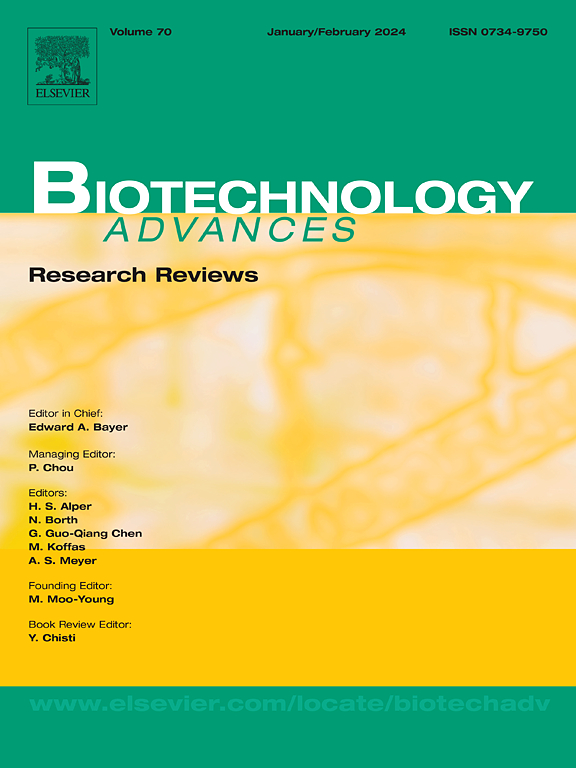Unlocking the potential of fluorescent microbes: Exploring their ecological and industrial applications
IF 12.5
1区 工程技术
Q1 BIOTECHNOLOGY & APPLIED MICROBIOLOGY
引用次数: 0
Abstract
Microbial world is invisible but offers potential and rare biomolecules with an array of hues, which pose multifaceted benefits to environment and humans. Among millions of known microbes from earth, very few microbial taxa are known to produce fluorescent molecules, which indicate their significance in science and industry. Some microbes are completely fluorescent, while some do not exhibit fluorescence externally but produces one or more intracellular fluorescent molecules with dim to bright or intense fluorescence. Fluorescent microbes produce either diffusible (extracellular/exogenous) or non-diffusible (intracellular/endogenous) fluorescent molecules on growth media. These fluorescent molecules benefit microbes in defence function and also offer a myriad of applications to humans. Studies on such microbes are still scarce and underexplored. This review treatises on the diversity, distribution, naturally couple bio-optical traits, and applications of fluorescent microbes (archaea, bacteria, cyanobacteria, and fungi), with special emphasis on bacteria, for further research and industrial applications. The research gaps on fluorescent microbes have been discussed to address their evolutionary origins, geographical distributions, and multifaceted applications.
释放荧光微生物的潜力:探索其生态和工业应用。
微生物世界是看不见的,但却提供了具有一系列色彩的潜在和罕见的生物分子,这对环境和人类带来了多方面的好处。在地球上数以百万计的已知微生物中,很少有微生物类群能够产生荧光分子,这表明了荧光分子在科学和工业上的重要性。有些微生物是完全荧光的,而有些微生物外部不表现荧光,但在细胞内产生一个或多个荧光分子,荧光从暗到亮或强。荧光微生物在生长介质上产生可扩散(细胞外/外源性)或不可扩散(细胞内/内源性)荧光分子。这些荧光分子有利于微生物的防御功能,也为人类提供了无数的应用。对这类微生物的研究仍然很少,也没有得到充分的探索。本文综述了荧光微生物(古细菌、细菌、蓝藻和真菌)的多样性、分布、自然耦合的生物光学特性及其应用,重点介绍了细菌,为进一步的研究和工业应用提供了参考。对荧光微生物的研究空白进行了讨论,以解决其进化起源、地理分布和多方面的应用。
本文章由计算机程序翻译,如有差异,请以英文原文为准。
求助全文
约1分钟内获得全文
求助全文
来源期刊

Biotechnology advances
工程技术-生物工程与应用微生物
CiteScore
25.50
自引率
2.50%
发文量
167
审稿时长
37 days
期刊介绍:
Biotechnology Advances is a comprehensive review journal that covers all aspects of the multidisciplinary field of biotechnology. The journal focuses on biotechnology principles and their applications in various industries, agriculture, medicine, environmental concerns, and regulatory issues. It publishes authoritative articles that highlight current developments and future trends in the field of biotechnology. The journal invites submissions of manuscripts that are relevant and appropriate. It targets a wide audience, including scientists, engineers, students, instructors, researchers, practitioners, managers, governments, and other stakeholders in the field. Additionally, special issues are published based on selected presentations from recent relevant conferences in collaboration with the organizations hosting those conferences.
 求助内容:
求助内容: 应助结果提醒方式:
应助结果提醒方式:


